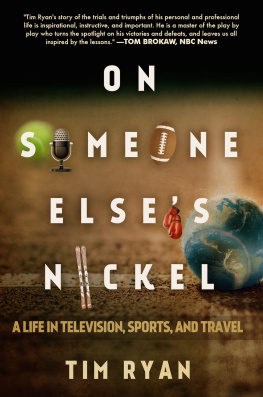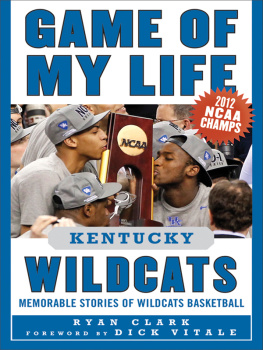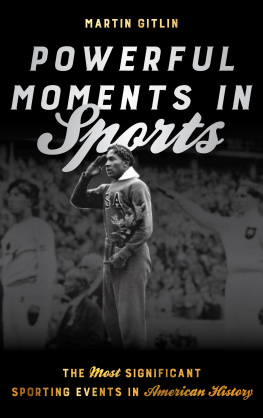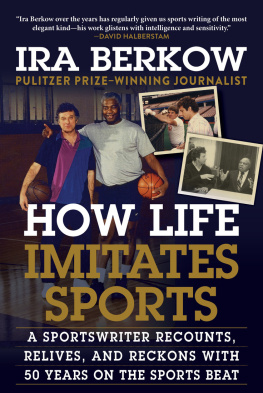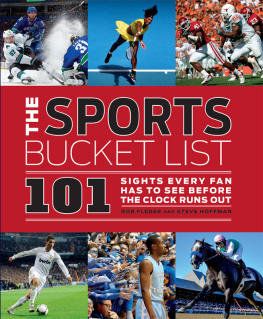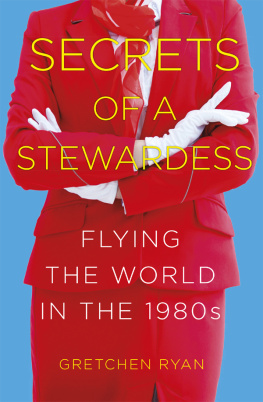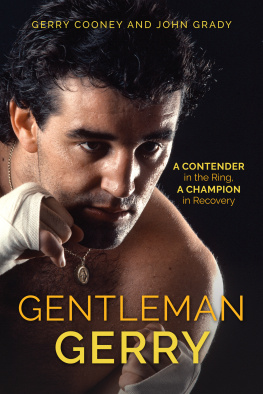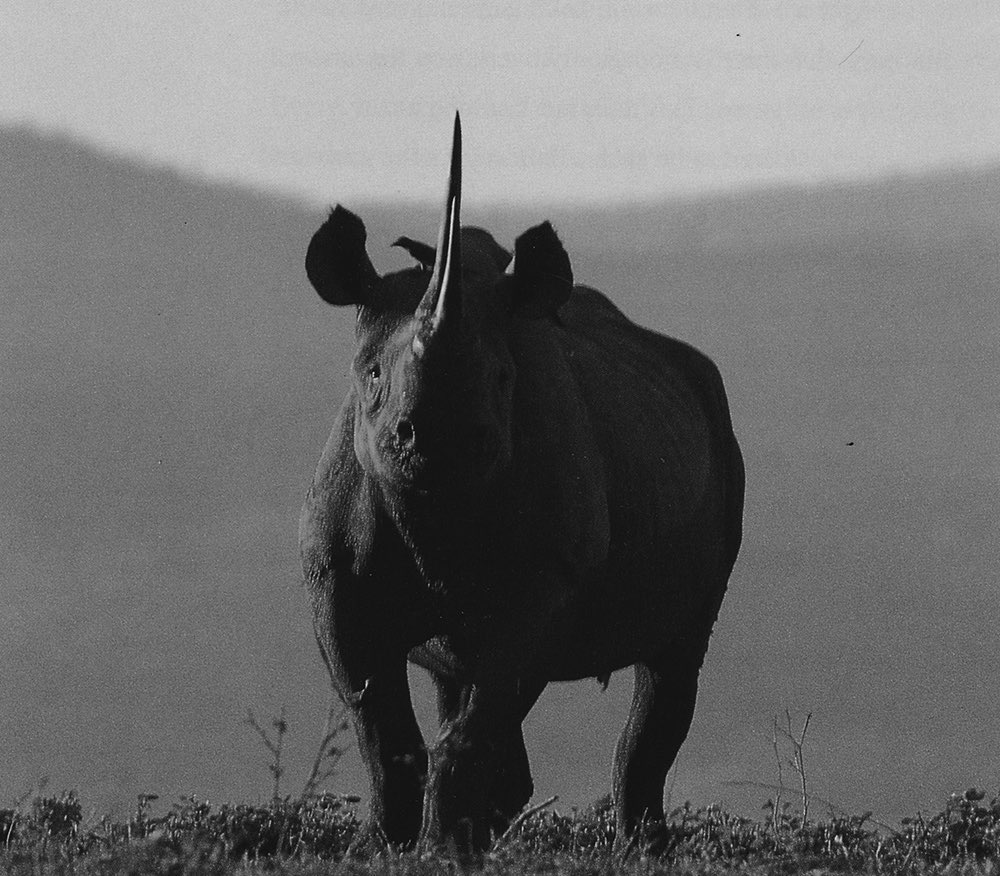Connect with Radius Book Group
Connect with us for information on new titles and authors from Radius Book Group:
www.RadiusBookGroup.com
Dedication
To Lee, the wife and mother who had the best years of her life stolen from herand us.
To Patricia, who came into our lives and brought my family love they had lost, and joy newly found.
To Kimberley, Kevin, Jay, and Brendan of whom Dad is most proud.
To Patricias children Celeste and John who joined our family and welcomed us into theirs.
To our collective grandchildren who made our Sun Valley Christmases special, and brighten every day we are together.
To my sisters: Cindy, like Lee taken too soon, Mary Jo whose myriad interests and accomplishments are inspiring and Kathleen whose zest for life is contagious.
To my late cousin Pat, who served as the brother I never had, and as an uncle to my children who adored him.
Preface
Through the viewfinder of my brand new Minolta camera, the black rhino looked about the size of a Volkswagen bus.
When I pressed the autofocus and extended the zoom, the rhinos enormous ears, pricked up like a thoroughbred in the starting gate, filled the camera lens. His eyes seemed focused totally on me.
And it turned out they were. My companions here in the middle of the bush in southern Zimbabwe numbered three: The African tracker who had led us to the rhinos territory, a hired television cameraman, and Clive Stockil, owner of the private game ranch bordering the Sabi River.
Clive was the only one armeda handgun on his hipand he warned us that if and when we found a rhino, and if the rhino became a threat, he would not shoot the animal. In that scenario we were left to our own survival devices.
When the rhino had emerged from a thick patch of scrubby bush, the tracker had quickly nailed his skinny frame behind the only accessible tree in the clearing where we silently stood. The cameraman, with his camera anchored on his right shouldervideotape rollingjumped behind the tracker. Clive was out of my view, but a few steps behind and to the left of where I was standing, rigid, directly in front of and about thirty feet from the massive animal whose privacy we had interrupted.
The rhino clearly saw me as his target. I slowly lowered my camera, knowing there was no point in flight. Rhinos are surprisingly fast, and amazingly quick from a standing startlike a good NFL running back.
About ten seconds had passed from the time he had emerged from the brush and encountered his intruders in the small clearing. As he started his charge, my options were limited: dive left or right and hope the momentum of his enormous bulk would carry him past meif I guessed correctly.
I went right. A shot rang out. As I rolled over my camera equipment in the dust of the terrain, I looked left to see the rhino, head low, horn protruding, catch Clive as he turned his body away. The impact pitched him through the air. Clive hit the ground about ten feet from where he had been standing, pistol in hand. The rhino rumbled away at full speed without breaking stride.
Fearful that the horn had caught Clive in the gut I scrambled to my feet, and with the others, ran to him.
Clive, Clive where did he hit you, I shouted.
Struggling to his feet, dust still swirling around him, Clive muttered: Im okay, the bugger got me in the backside, as he swatted sand from his safari shorts. I told you chaps I wouldnt shoot the animal.
Well, he hadnt. Clive had fired a shot into the ground to distract the rhino from his first targetme. As I dived right, I heard the shot and saw the rhino veer to my lefttoward Clive. The rest of the ten seconds of drama had dissolved into a cloud of dust and shouting voices.
Clive had saved my lifeand in fact his own. He and his men had translocated a few rhino to stock his game farm, and because rhinos in Southern Africa in the eighties and nineties had been under continual threat from poachers, one of many things being tried to save them was to shave off their valuable hornsthe source of revenue for the poachers and their illegal traders.
While our rhinos horn had grown back to about six to eight inches in length, the normally needle-like point was rounded off and blunt. Still, had the beast hit Clive head-on, or trampled him, the damage from a rampaging, 2,500-pound animal at full speed could well have been fatal. Clives bravery and quick wits left him with only a badly bruised butt and a broken wrist watch.
And what you may ask, was a TV sports announcer doing risking life and limb in the African bush? On this dangerous occasion it was to film a wildlife segment for a TV show on CBS Sports. In fact, it had been boxinga sport I became identified with in the 1980swhich took me to Africa the first time, and opened the door for me to a career and lifestyle totally unique among my peers in the sports broadcasting business.
Fifty-three years later I still look back with wonder on a tapestry of experiences on six continents that my life as a television sports announcer has afforded me. It has been a life as much about seeing the world and its treasures, as describing athletic prowess to sports fans gathered in front of TV setsa life learning about different cultures and cuisines, hearing different languages, exploring different landscapes.
Given the opportunity by three different television networks over the years, I chose a path less taken by most of my better-paid colleagues anchored to their desks in lavish TV studios far from the game-sites. I chose to be at the scenes of the action, especially if they were in exotic locales around the world.
It has been quite a ride from the wheat fields of Manitoba to the top of the Swiss Alps and the wild bush of Zimbabwe, from gritty hockey rinks to dazzling Olympics venues, from Holiday Inns in college football towns to five-star hotels in Paris and Rome.
Join me, as I reminisce about my unusual journey, and what I learned along the wayabout the world, and about myself.
CHAPTER 1
Who Is This Guy Anyway?
The esteemed sports broadcaster Curt Gowdy, who was the top-gun announcer at NBC Sports early in my career, was once being interviewed by a journalist who asked where he was from. Curts reply began: Well I was originally born in and then
Normally an articulate and grammatically informed announcer, Gowdy managed to imply that he was born twice, presumably in two different locations.
I recollect that I heard that story from an NBC stage manager, Jim OGorman, who worked with both Curt and me and others over many years. OGorman was a calm, reassuring presence in the broadcast booths of live events who could be counted on to not only give accurate counts on his fingers (albeit only from ten on down) but to have in his kit-bag everything an announcer could need while tethered to a microphone cable for three hours or more: hangover cures, Band-Aids, Preparation H, and Imodium, among other creative necessities.
But I digress.
I was originally born in Winnipeg Manitoba, in 1939. My father Joe Ryan, son of a wheat farmer, met and married my mother Helen Killeen in Ironwood, Michigan where he had been working in the lumber business. After a brief time in Chicago, Joe and Helen moved to Winnipeg where my fatherwith a law school degree and an accounting backgroundtook a job with the Manitoba Wheat Pool. A sports fan but not an athlete, he also managed minor-league sports teams in Winnipeg. His interest in sports landed him a job as a sportswriter, and then as a columnist with the Winnipeg Free Press.

